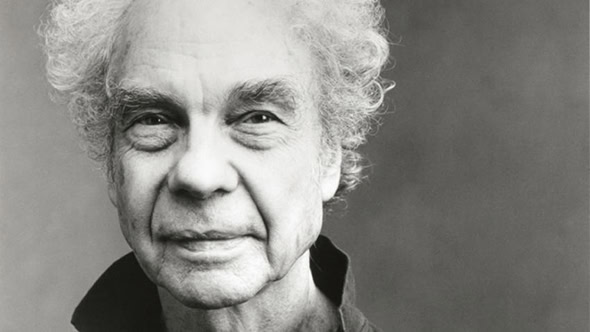Ian Abbott on Candoco double bill at Bristol Old Vic
Posted: March 13th, 2020 | Author: Ian Abbott | Filed under: Performance | Tags: Adam Kalderon, Candoco Dance Company, Gareth Green, Joe Newman, Laura Patay, Mickaella Dantas, Theo Clinkard, Toke Broni Strandby, Yasmeen Godder | Comments Off on Ian Abbott on Candoco double bill at Bristol Old VicCandoco Dance Company’s Double Bill: Face In and Hot Mess, Bristol Old Vic, February 25

In a deliciously niche piece of UK choreographic history, Candoco commissioned the works on the current double bill from Yasmeen Godder in 2017 and Theo Clinkard in 2019; back in 2008 when Clinkard was one half of the brilliant PROBE alongside Antonia Grove, it was PROBE who commissioned a short work from Yasmeen Godder in which Clinkard danced as part of their Magpie evening and it was the first time I encountered both these artists.
Face In by Godder self describes as: ‘a sensual and disturbing ode to intimacy and imagination, expressed through striking images and daring uninhibited dance, set to an urban indie score.’ Set amongst Gareth Greens’ design of prisms of fruit-salad lighting projected on to white cycs on either side of the stage over 30 minutes, we’re introduced to solos, duets and trio islands of abstract partner work, contact and some lifts mixed in with plenty of Godder’s visual signatures of ripped/embellished costume (designed by Adam Kalderon) and big leary tongue pulling.
Whilst Laura Patay is highly charismatic (having also been the standout performer in Hetain Patel’s Let’s Talk About Dis) and Mickaella Dantas has a spiky energy, the rest of the company feel really lacklustre in their performance with Toke Broni Strandby struggling in particular. The uninhabited and sensual dance that we are meant to be witnessing and feeling is nothing but a false and fabricated physical frenzy and one that I simply do not believe; they attempt to build and sustain an energy on stage, attempt to create friction or disturbance but none of this transfers to me in the audience — if it ever really leaves their bodies.
The all-White company are dialling it in and in some sense I can understand it; middle-class choreographic abstraction is dead, it’s dull, it says nothing, there’s no point to it and it’s an exercise only in ego. If this is the material you as a dancer have to work with, then you’ll deliver a certain level of professionalism, but I think you can tell if they really subscribe to either the choreographer or the intention behind the work.
Clinkard’s Hot Mess self describes as ‘an unpredictable and anarchic performance set to an eclectic score by the award-winning Joe Newman of alt-J. Art installation meets dance piece in this explosive new work by the company that continues to expand perceptions of what dance can be.’
On his own website and social media channels, Clinkard offers lots of other contextual information around the work which is worth adding to the slim programme notes from the evening. He says: ‘It’s a piece full of doubt and actively unknowing and I’m genuinely filled with doubt and unknowing when witnessing it. We created an oddly exciting place of collapse and potential and watching these dancers navigate its demands is pretty thrilling. I hope it’s a dance that reflects the times were living in.’ Alongside this he also created:
Hot Mess. a Manifesto
Rejecting: Celebrating:
the stable the unformed
the fixed the unknown
the polished the potential
the repeatable the collaborative
the product the unplanned
the heroic the process
the known the unexpected
the formal the failure
the ordered the queer
the absolute the precarious
the resilient the disobedient
the known the messy
In 2019 Clinkard made nine new works for different companies; with Hot Mess I feel like the reservoir of his ideas and concepts have dried up. What we’re left with is the dregs of an alt-J b-side pushed through three effects modulators with seven pieces of dangling material in which the dancers thrash about in the opening scenes followed by half-finished Meyerholdian biomechanical gestures that are neither satisfying, explosive, nor instrumental in expanding perceptions of what dance can be. If I feel a sense of reluctance from the performers in Face In, in Hot Mess it is multiplied to infinity; they are certainly carrying out the manifesto and reject it all, but they also reject the majority of the audience who come to see the company; it is almost uncomfortable to sense the amounts of sighing and fidgeting in the audience.
Candoco is not a company that is touring small-scale and indie black box studios; it’s touring mid-to-large scale theatres around the world and need work that is befitting those spaces and audiences. Hot Mess does not rise to the occasion. Although Clinkard undoubtedly achieves his manifesto (with a considerably heavy nod to Yvonne Rainer’s No Manifesto from 1965), it is at a cost to the company, and I cannot see Hot Mess staying in their repertoire for as long as works by Godder, Patel or Thomas Hauert. Titles can be revealing: in informal American usage, a ‘hot mess’ is ‘a person or thing that is spectacularly unsuccessful or disordered, especially one that is a source of peculiar fascination’.
It’s really worth repeating for those in the back: middle-class choreographic abstraction is dead.
